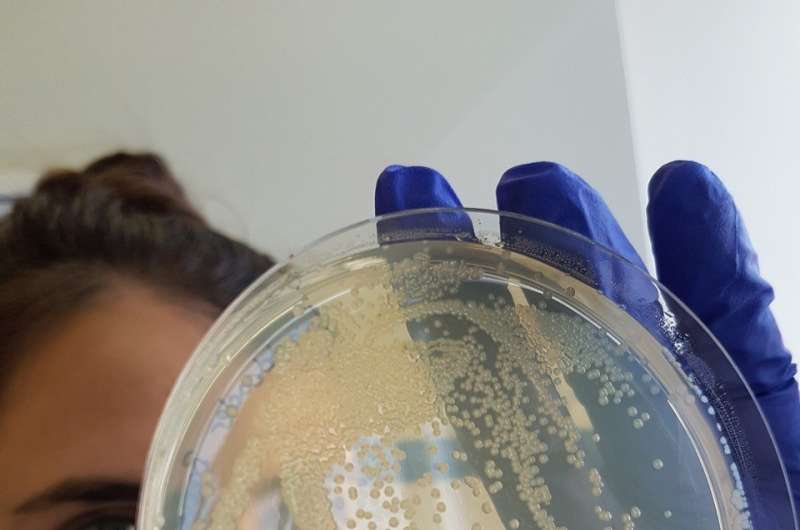Petri dish with colonies of the dangerous hospital pathogen Acinetobacter baumannii. Credit: Goethe University Frankfurt
Cases of antibiotic-resistant bacteria in hospitals have increased dramatically in recent years, and the health system faces tremendous problems as a result. Alongside Staphylococcus aureus (MRSA) and Klebsiella pneumonia, another pathogen has now arrived on the scene—Acinetobacter baumannii.
Acinetobacter baumannii infections are often fatal due to its increasing antibiotic resistance. In some European countries, over 90 percent of isolates no longer respond to antibiotic therapy. Particularly worrisome is the fact that the pathogen is spreading throughout the world. To address the problem quickly, Goethe University Frankfurt departments of Molecular Microbiology & Bioenergetics, Medical Microbiology & Infection Control, the Institute of Cell Biology & Neuroscience and the Institute of Biochemistry are collaborating with the Robert Koch Institute and the universities in Cologne and Regensburg.
"We have achieved something quite unique—we use patient isolates, sequence their genomes and analyse their pathogenic properties, which are then characterized with regard to countermeasures," explains Professor Volker Müller, microbiologist, and Professor Volkhard Kempf, microbiologist and physician, who are the Research Unit's two spokespersons. They have already identified the first virulence traits by means of this approach.
The researchers know what the bacterium feeds on, how it survives stress, how it adheres to living and nonliving surfaces, and how it withstands antibiotics. This enables the researchers to test new targets for deactivating the bacterium. They discovered, for example, that bacteria are no longer able to trigger infections when blocked from synthesising a certain sugar (trehalose). The research team is now working to shed light on this sugar's biosynthesis process in order to develop inhibitors.
Provided by Goethe University Frankfurt am Main






















